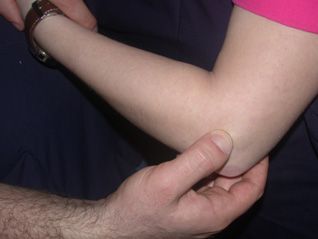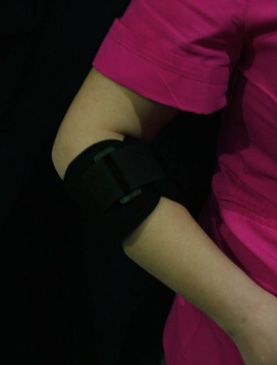It may result from compelling, repeated and wide grasping movements of extensor muscles in a stretched position (i.e. butchers and painters), or direct traumas in this area.
The outer part of the elbow that is called lateral epicondyl becomes prone and sensitive to touch; pain is the most common complaint (Fig. 1). Pain increases especially while the wrist is bent for grasping rough objects. The patient feels pain in the elbow while raising a teapot etc.
First of all, painful movements should be avoided. In this period, it is rather preferred to take nonsteroid anti-inflammatory medications for pain relief if they pose no drawback for the patient. Bands that are particularly designed for tennis elbow disorder can be worn on the problematic muscle of the forearm (Fig. 2). Physiotherapy along with the stretching and warm–up exercises and ultrasound are beneficial. Steroid injections to the painful area are of importance for treatment. Albeit all these conservative treatment methods, a surgical intervention may be raised as an option for the patients that do not start to recover in 4 to 6 months. In the surgical approach, degenerated muscle and tendons are removed however physiotherapy should definitely be involved in the post-operative period.










